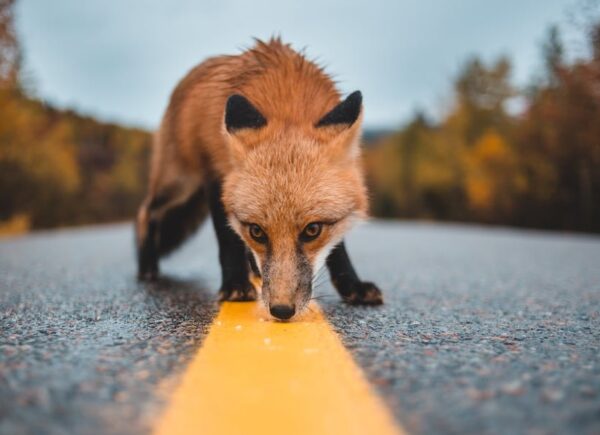The fox is “our” predator. The predator of Europe, because it is the one you can meet practically everywhere on the continent. A “nice” predator because unlike wolves and bears it never attacks humans, even if it causes considerable damage to farms. A predator that lives also on Mount Etna, where it reigns and dominates as the largest wild mammal in the area. Yet the fox is losing those free and unique characteristics that make it an animal to be admired. And the fault – as always – lies with humans! Which in this case are wrong due to too much affection, not to cruelty. The Etna fox is sweet, cute, friendly. But please… don’t spoil it!
Where to find the Etna fox
The Etna fox is a classic European fox, with red-orange fur, large hazel eyes and a very thick tail. Like all foxes, it lives in pairs with its partner -rarely venturing alone- and with its cubs. It loves to go out especially at sunset and at night, but sometimes you also meet it in broad daylight, especially if going hunting.
This little animal feeds on wild fruits, birds, reptiles and small rodents thus helping to control the spread of other species in the area. Sometimes, if the area is urbanised, it tends to raid chicken coops or rabbit cages. On Etna foxes live mostly on the southern side of the volcano, but they often go also east and west. It is more difficult to encounter them on the north side.
 Residents and tourists love to spoil the fox
Residents and tourists love to spoil the fox
The residents started first. In order to keep foxes away from their chicken coops, they preferred to feed them with other food so as to wean them from hunting. Tourists did the rest of the “damage”. When they meet a fox along the paths of Etna, they tend to let them eat their sandwiches, their sausages and other delicacies that the animal obviously appreciates very much.
The serious consequence is that the fox today seeks out humans more and more. And it behaves with them as their “pet”. It seeks human’s food, expects their food. And in addition to changing eating habits, not always in a positive way, unfortunately it feels less and less the need to hunt.
If the fox stopped hunting completely, mice, rabbits and reptiles, including poisonous vipers, would dramatically spread on Mount Etna. And these would cause greater damage, both to farms and to human safety on roads and paths. Furthermore, the fox is the only Etna mammal that can oppose stray dogs – not frequent but sometimes present on the mountain’s paths – discouraging them from proliferating in the tourist areas of the volcano.
How to behave with the Etna fox
When you meet these cute little foxes during your visit to the volcano, you can photograph them, admire them, let them follow you or, on the contrary, “let yourself be guided” by them on the path. You can also look at them with respect by thinking about the legends that concern them. But…
DO NOT give them food.
DO NOT feel sorry for them.
DO NOT try to pet or cuddle them.
The best way you can show love and care for foxes is to let them remain beautifully wild. Even if your heart aches, don’t feed them. Even if there is snow around, don’t cover them. Even if it rains and they are wet, do not give them shelter. Foxes know very well how to deal with climate problems in their territory.
And don’t forget that if the fox gets used to being cuddled by tourists, to the point of depending on their food and help, when the season ends or when tourism decreases the animal will no longer be able to look after itself. And it will certainly die.